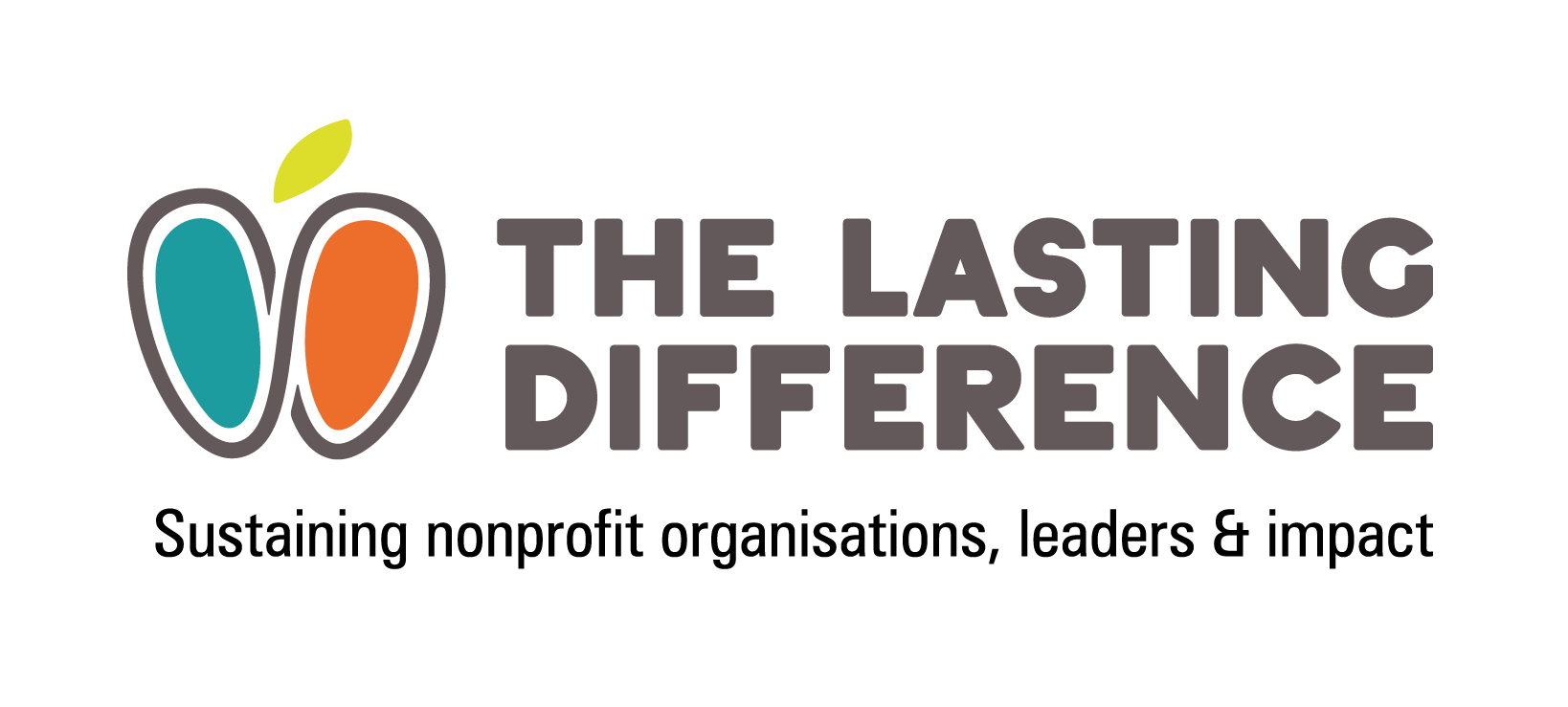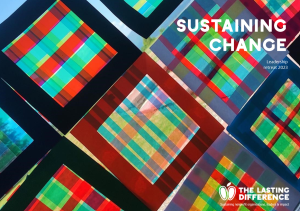Every two years we invite inspiring people and partners to join us for a tranquil three-day residential. We share gifts and challenges in a relaxed, trusting environment. This year the focus was on sustaining change.
-
-
-
-
-
- What have we learned from the scale and pace of change during and since the pandemic?
-
-
- What is system change and how do we do it?
-
- What about the changes and transitions in our own lives?
-
-
-
The learning that emerged is distilled in ‘Sustaining Change’, a vibrant new exploration of 21st century charity leadership. It’s set out in two main parts, summarised here and available in full via the link below.
Part One: Internal leadership

- Holding onto what makes you great: leadership and management.
Traditional management has its place, even in managing change. It can provide some certainty when organisational structures and processes change. It gives newly promoted people a framework to follow. But traditional management doesn’t align with many charities’ values or the cultures they need for today’s challenges: Shared leadership and accountability; valuing diverse contributions; making decisions close to the point of delivery. In other words, responsiveness to change. Whatever leadership approach you adopt, it’s important for the whole leadership team to be on board—consistency counts.
- Being brave: sowing seeds, feeding the roots, thinning, bearing fruit.
Brave leaders, charities and funders invest in learning. Importantly, they are open to taking risks that help them to do this. They listen and respond to people and the wider environment but manage expectations – and make decisions – ethically. They build people’s capacity. They remove barriers to people being heard – then listen. They know this will bear fruit.
- Stopping for breath: Breathing space, capacity, resilience, wellbeing.
For three years things have been in emergency mode. That’s unsustainable. In the face of overwhelming demand and complexity, people resort to just doing something, anything. That’s self-defeating. Now is the time to draw a line and reset expectations about what normal capacity is.
Part Two: Cross-boundary leadership

- Cross-boundary leadership: trust, partnerships, system change.
Voluntary and public sector leaders need one another but they don’t always know how, or how to work together. People in the voluntary sector often say that the public sector has all the power and the money. People in the public sector often say their power and money are both limited. Yet they are all funded largely from the same pot, to achieve the same goals. What do we do?
- Power, influence and voice: getting to the point.
How do you share your experience authentically, speaking with and on behalf of the people you work with? Talk with power and influence to those who have power and influence? It can sometimes feel like you’re starting with your arms folded. If you open them instead, you can communicate the nuances and challenges you are uncovering.
- Your place in the orchestra: Soul, blues, banging the drum and knowing the score.
The beauty of the third sector is the ability to see the human side of systems, connecting communities with decision-makers, telling the stories, bringing the expertise, giving the data soul. Collaborating. Taking a relationship-based approach to changing things, finding the connections, human to human. The system is people: orchestra, audience, ushers, conductor. Everyone.
Download
Download Sustaining Change here.
Thoughts, questions, feedback? Tell me what you think!
Illustrations (c) John Miers, used under exclusive licence

